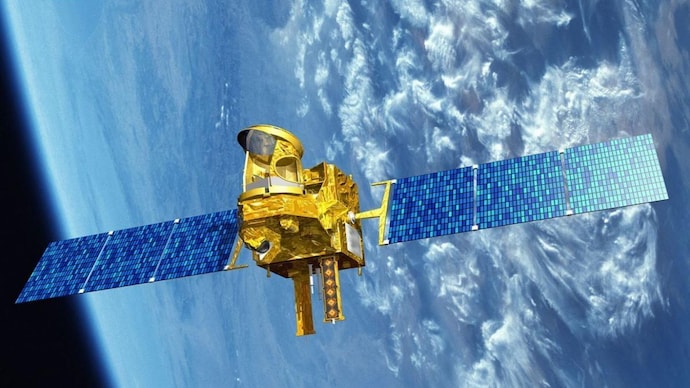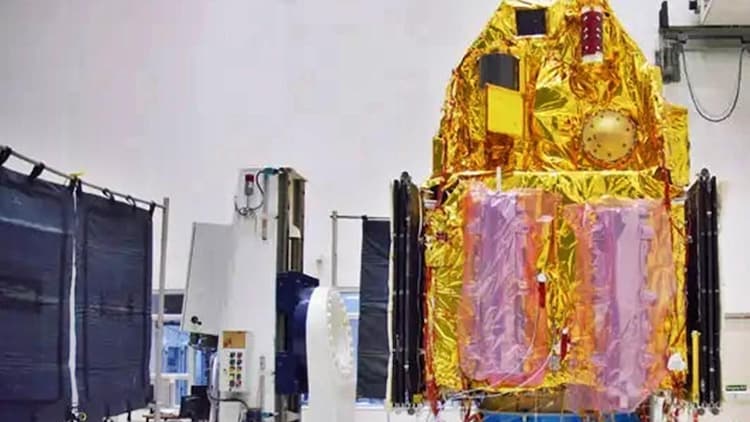
Megha-Tropiques-1: Why is India crashing this satellite today?
India is set to crash Megha-Tropiques-1, a satellite weighing about a tonne, after it provided critical climate data for over a decade.

In Short
- Megha-Tropiques-1 is a joint programme between India and France
- Isro is crashing the satellite as part of its commitment UNIADC
- The spacecraft still has about 125 kg of onboard fuel
The Indian Space Research Organisation (Isro) is set to crash a satellite, marking the end of life for the mission on Tuesday. The Megha-Tropiques-1 (MT1) will re-enter Earth's atmosphere and burn in the skies after serving for over a decade.
Megha-Tropiques-1 was launched into Low Earth Orbit (LEO) on October 12, 2011, as a joint mission developed by Isro and the French space agency, CNES, for tropical weather and climate studies. The mission was initially planned to operate for three years, but it was extended later as it continued to deliver key data about the climate for a decade.
"The satellite has continued to provide valuable data services for more than a decade, supporting regional and global climate models till 2021," Isro said in a statement.
WHAT IS MEGHA-TROPIQUES-1?
Megha-Tropiques-1 is a joint programme between the Indian Space Research Organisation (ISRO) and France′s Centre National d′Etudes Spaciales (CNES). Megha in Sanskrit is ‘cloud’ and Tropiques in French means ‘tropics’.
Also Read | Japan destroys new rocket in space after second-stage engine failure
The spacecraft was constructed by Isro, based around the IRS bus developed for earlier Indian satellites, and carried four instruments to study the Earth′s atmosphere.
According to the Meteorological & Oceanographic Satellite Data Archival Centre, the tropical belt receives more energy from the Sun than it radiates back into space. The excess energy is transported to temperate regions by the motion of the atmosphere and oceans. Variation in the energy budget of the tropics has the potential to affect the whole planet, making it important for scientists to understand.
WHY IS ISRO CRASHING MEGHA-TROPIQUES-1?
Isro is crashing the satellite as part of its commitment to the United Nations Inter-Agency Space Debris Coordination Committee (UNIADC) following the end of the mission life. The UN guidelines state that at its end-of-life the satellite should be deorbited, preferably through controlled re-entry to a safe impact zone, or by bringing it to an orbit where the orbital lifetime is less than 25 years.
The other option was to leave it for good in its orbit as it continued to decay. However, in that case, the orbital lifetime of MT1, weighing about 1000 kg, would have been more than 100 years in its 20 deg inclined operational orbit of 867 km altitude. The spacecraft still has about 125 kg of onboard fuel that could pose risks for accidental break-up, making it critical for Isro to de-orbit it.
Also Read | Gaganyaan mission: Isro conducts big test, simulates deployment of parachutes
Isro said that the leftover fuel is estimated to be sufficient to achieve a fully controlled atmospheric re-entry. Controlled re-entries involve deorbiting to very low altitudes to ensure impact occurs within a targeted safe zone. "Usually, large satellites/rocket bodies which are likely to survive aero-thermal fragmentation upon re-entry are made to undergo controlled re-entry to limit ground casualty risk. However, all such satellites are specifically designed to undergo controlled re-entry at end-of-life," Isro added.
WHERE WILL MEGHA-TROPIQUES-1 CRASH?
Isro has performed 18 orbit maneuvers since August 2022 to progressively lower the orbit of the defunct spacecraft. The final two orbit maneuvers will put it on a course to re-enter Earth and burn up in the atmosphere.
Also Read | India is set to crash a satellite. It's a good thing
Isro has selected an uninhabited area in the Pacific Ocean as the targeted re-entry zone for MT1. Isro maintained that the final de-boost strategy has been designed after taking into consideration several constraints, including visibility of the re-entry trace over ground stations, ground impact within the targeted zone, and allowable operating conditions of subsystems, especially the maximum deliverable thrust and the maximum firing duration of the thrusters.
The final two de-boost burns followed by the ground impact are expected to take place between 4:30-7:30 pm on Tuesday.
Also Read | Scientists worried as Antarctic sea ice hits lowest levels ever recorded

